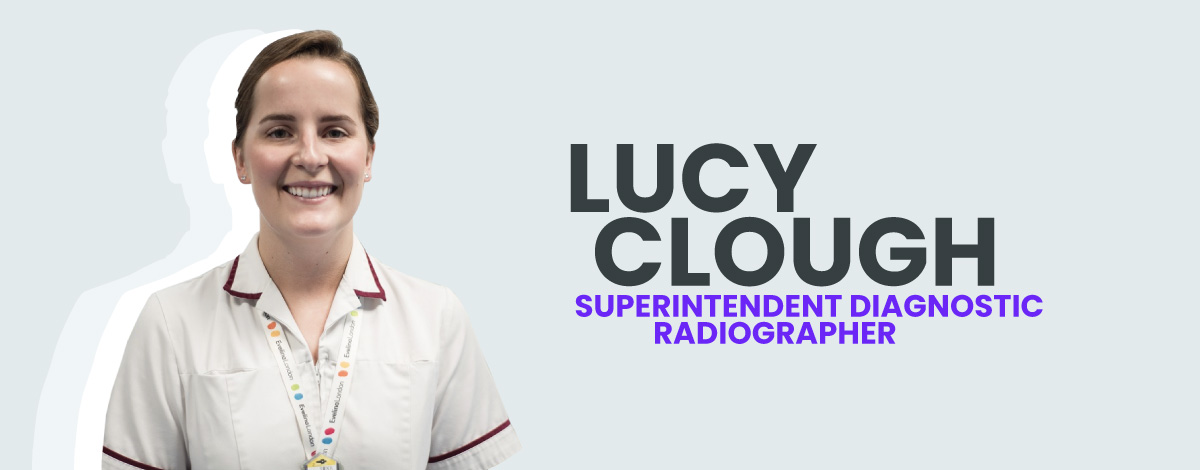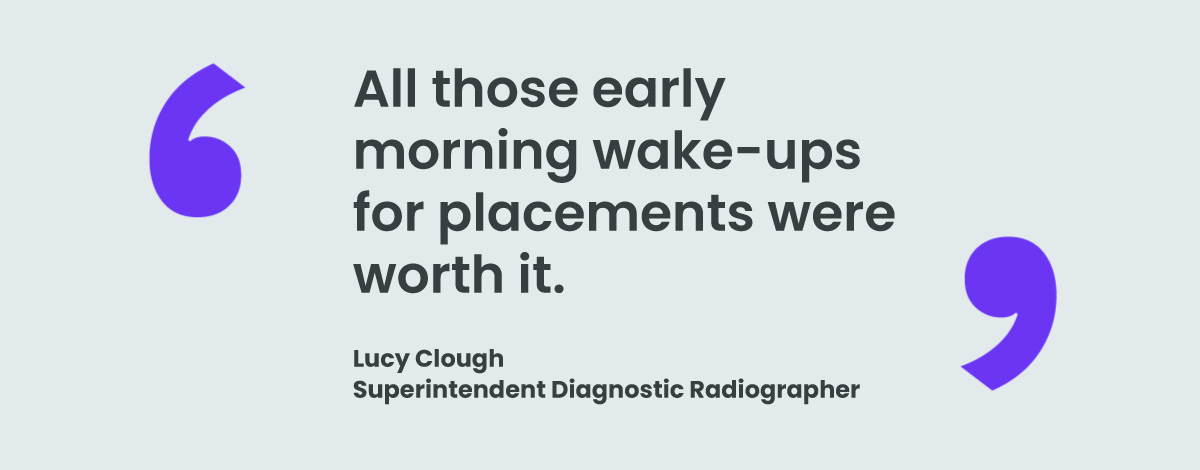A Coffee Break with Lucy Clough: ‘A majority of patients that come through the hospital will have imaging of some kind.’
27 Oct 2021Interview
Having known she wanted to work in the NHS from a young age, Lucy Clough spoke to Julia about her role today as a Superintendent diagnostic radiographer at the Evelina London Children's Hospital which is part of the Guy’s and St Thomas’ NHS Foundation Trust.
Lucy and her twin sister both joined the NHS as radiographer and physiotherapist respectively, following in their mum’s paediatric nurse footsteps. After studying sciences at A-Level, Lucy graduated from the University of Portsmouth’s BSc Diagnostic Radiography course in 2011.

A profession in demand
According to Lucy, “a majority of patients that come through the hospital will have imaging of some kind, and the trust has over 120 radiographers to manage this”. She further explains how they tend to have a flexible workflow, as there are so many places they are needed - in a hospital as big as theirs, it helps if people can move around and are well utilised across departments.
Having chosen the diagnostic (rather than therapeutic) radiography route, Lucy described how a ‘typical’ career may unfold. “Radiographers work in many areas of the hospital, typically starting work in A&E or a general department, using plain film and taking x-rays of the body; in theatre, using x-rays to help surgeons guide plates and screws; on the wards, visiting patients who are too unwell to visit the department; and carrying out live screening with examinations such as barium swallows, for those who have difficulty swallowing”.
Lucy outlines how, as you gain more experience, the more pathways you can go down in radiography; a radiographer can specialise after becoming a Band 6 radiographer and may then become a sonographer or reporting radiographer, for example.
Lucy's path
For Lucy, upon reaching Band 6, she extended her scope into CT and interventional imaging. Today she runs the children’s side of things. After showing an interest in the field, she was frequently put in the paediatric department. The work typically involves different conditions compared to adults and can include cardiac imaging of the heart, stents put into arteries, and baby atrial septal defects. She has also trained in radiography reporting, using pattern recognition to interpret the x-rays. Whilst radiologists (the doctors) usually do reporting, there is a shortage so it is a very useful skill to learn.
Moving into the future, the Evelina London Children’s Hospital is expanding with a brand new hospital, which is due to open in 2027. Lucy wants to create her own team of paediatric radiographers and put this large hospital on the map. She would also like to become an accredited advanced practitioner for paediatric reporting and work with as many AHPs as possible.

CPD is essential
In terms of CPD, Lucy describes how this is essential if you want to progress to become an advanced practitioner, as you need to produce evidence - it’s not only needed for the HCPC audit. She uses her work diary to keep track of her evidence, as well as the Society of Radiographers’ portal.
Lucy likes using Twitter to keep up with what’s going on in any other areas and she also enjoys comparing AHP professions with her physio sister and the speech and language therapists that she works closely with; “it’s nice that we have a part to play in other people’s research and day-to-day practice.” Before taking over paediatrics, she was educating SLTs on the role of the radiographer (and vice versa); the two AHP professions often work side-by-side when assessing why their patients are having trouble swallowing.
As another CPD-friendly activity, Lucy is also part of the imaging task force for all paediatric radiographers across the country; “it’s a helpful forum where you can talk to people and ensure you’re up to date on everything”.
Although she admits “it might sound a bit geeky!”, she also enjoys mock audits, CQC audits and QSI accreditation, with inspectors visiting to ensure the trust can keep its accreditation status. She finds reflecting on those types of visits helpful and they keep you on your toes; “it’s good to have moments like that”. Lucy also runs education sessions once a month, communicating with as many radiographers as possible and understanding what they need to know from a paediatric point of view; she discusses cases that have come up and how the radiographers can learn from them.
Tough times ahead
Like other NHS services, radiography has been affected by the COVID-19 pandemic. As of autumn 2021, services are increasing but they do have staff shortages, staff sickness and fatigue. Normal service has resumed following the less frequent use of radiographers when surgeries were cancelled during the pandemic, but they are struggling. “The team is going into the winter with increased anxiety, but wellbeing champions and zones have been set up to support the staff.”
A word of advice
Lucy gives some wise words of advice for her past student-self: “All those early morning wake-ups for placements were worth it - and you will make friends for life. Be as proactive as you want to be: the more proactive you are, the further you’ll get. Arrange electives. Get as much experience as possible: even if you think you know something, everyone will teach you something different so never waste an opportunity.”
A huge thank you to Lucy for taking the time to share some insight into her career with us. If you enjoyed this article and found it a valuable insight into the life of a radiographer, please share it on Twitter.
Julia helps you record, reflect, and report on your CPD through our website and app.
It's an easy way for you to stay on top of your CPD. Sign up for a 14 day free today.